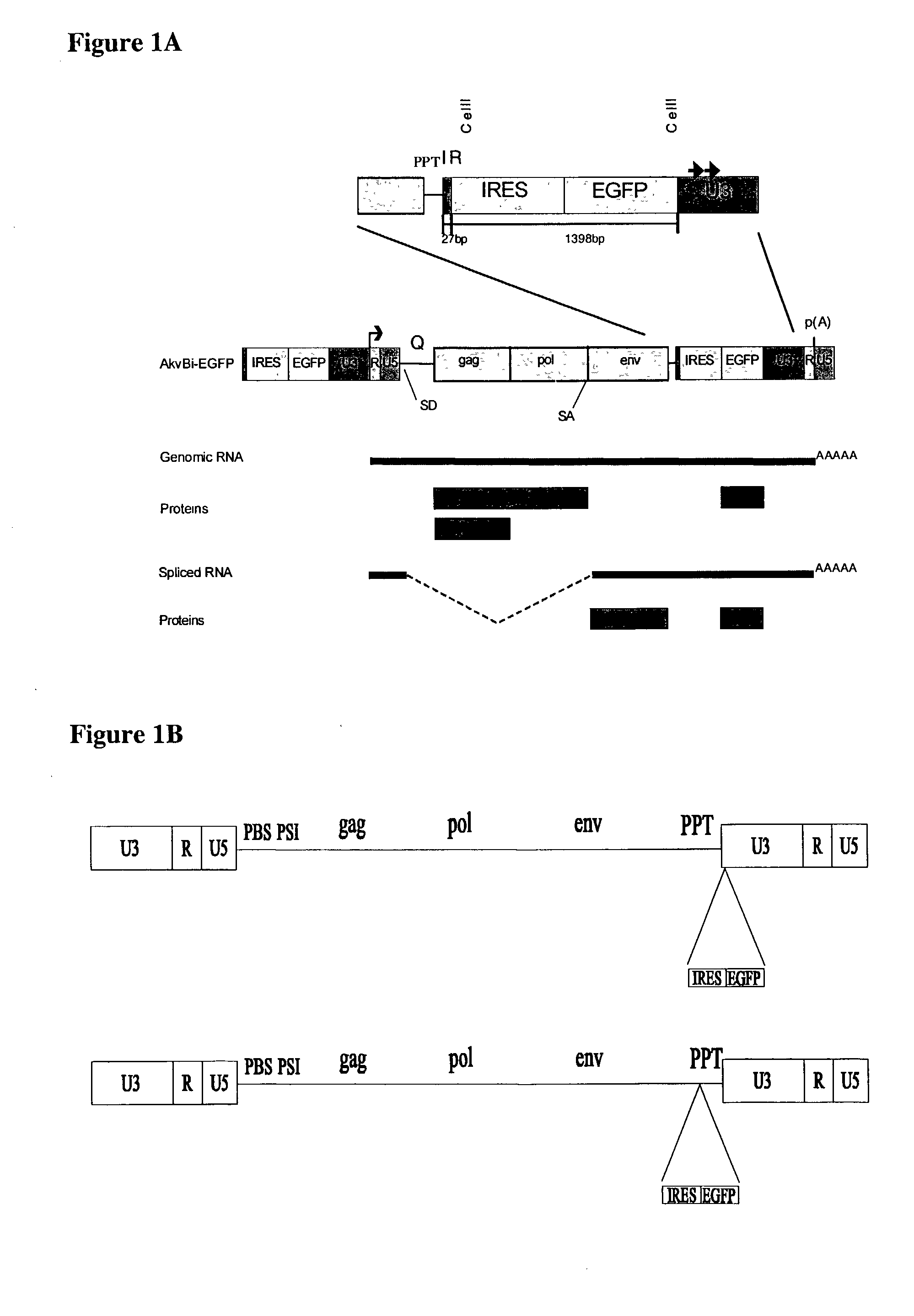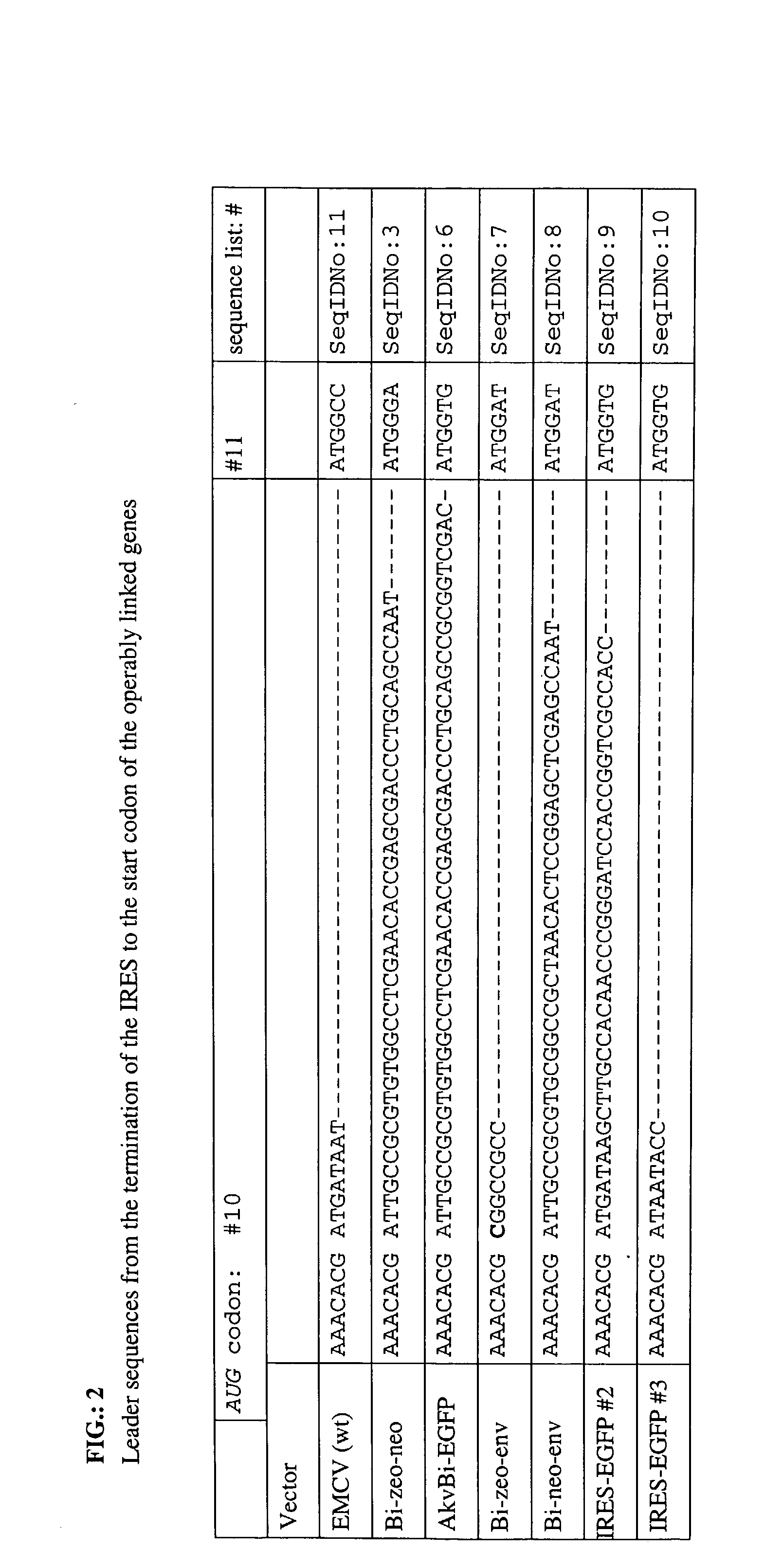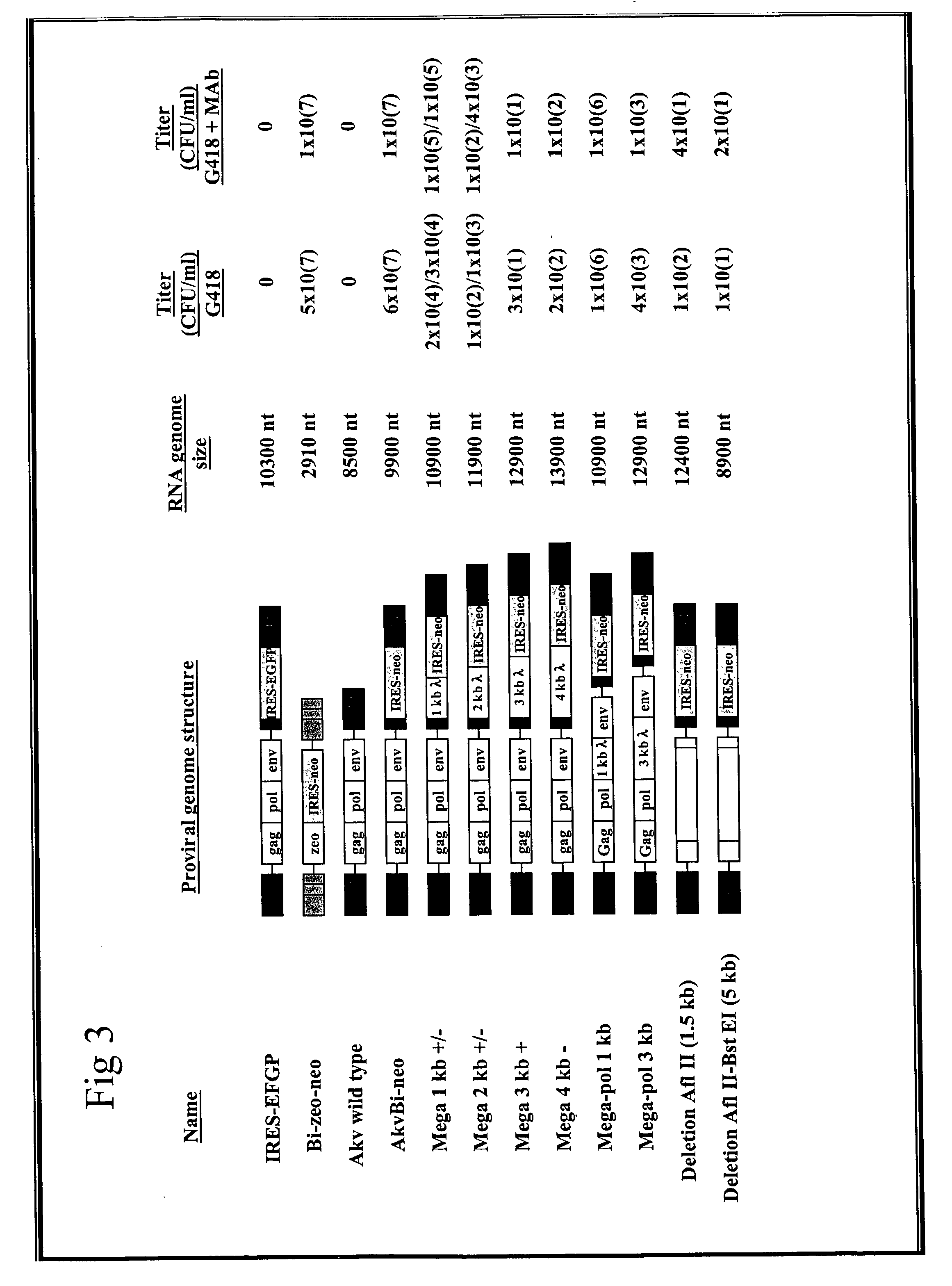Expression of heterologous genes from an IRES translational cassette in retroviral vectors
- Summary
- Abstract
- Description
- Claims
- Application Information
AI Technical Summary
Benefits of technology
Problems solved by technology
Method used
Image
Examples
example 1
Construction of Replication-Competent Retroviral Vectors Containing an IRES Cassette in the LTR
[0094] To examine the possibility of constructing replication-competent murine leukemia viruses, which express heterologous genes, an EMCV IRES-neo cassette (18) was inserted into the CelII site in the 3'LTR of SL3-3-MLV and Akv-MLV (FIG. 1). Thus, the IRES-neo cassette from pJD214HyBi.sup.+ (17)(from coordinate 270 in the EMCV map (12) to stop codon neo) was amplified by polymerase chain reaction (PCR) (1398 bp)
[0095] 5' primer: CAAGCTTAGCGGCCGCCCCCTAACGTTACTG, (SEQID No: 1),
[0096] 3' primer: TATGCTAAGCTCGACTCAGAAGAACTCGTCAAG, (SEQID No: 2).
[0097] The leader sequence from the EMCV start codon 10, position 826 in the EMCV map, to the ATG start codon in neo is;
[0098] ATTGCCGCGTGTGGCCTCGAACACCGAGCGACCCTGCAGCCAATATG, (SEQID No: 3).
[0099] Additionally, for the construction of a retroviral vector containing an IRES-EGFP (green fluorescence protein) cassette, such an IRES-EGFP cassette was PCR a...
example 2
Construction of Retroviral Vectors Additionally Containing an IRES-env Translational Cassette
[0132] To achieve replication within a packaging cell culture resistance against superinfection has to be avoided. This resistance is mediated by the Env-protein binding to the cell membrane receptor, thereby preventing attachment of viral particles (7). The new vector system circumvents this resistance by including env in the bi-cistronic vector.
[0133] For the construction of the new vector at first, an Akv-env was inserted downstream of the IRES-element in the zeo-IRES containing vector, as described in Example 1, giving rise to Bi-zeo-env vector. The spacer between IRES and env was constructed to be the same length as in EMCV but with an altered sequence holding a restriction recognition site Not I (see also FIG. 2). Translation efficiency of this IRES-env cassette was analysed in a complementation experiment with a GagPol expression construct. Transfer of the supernatant from a NIH3T3 ce...
example 3
Animal Experiments
[0163] A construct with an optimal translational initiation was selected. Animals were infected with the construct VIRAGFPM and the number of infected and EGFP-positive cells was scored. It was shown that VIRAGFPM infects the cells in a high rate.
[0164] 3.1 Optimization of the Leader between the IRES EMCV IRES Element and Translational Start of the Heterologous Gene
[0165] To optimize internal translational initiation from the EMCV IRES element several different leaders (see Table 1) were analyzed for EGFP expression in the context of the replication competent Akv murine leukemia virus. In two constructs, VIRAGFPC and VIRAEGFP (see Table 1), polylinkers with convenient restriction sites were inserted with the polylinker in VIRAGFPC being derived from the Clontech construct pIRES-EGFP. Both viruses showed a 10-fold decrease in flourescence by flow cytometry analysis as compared to the best construct tested, VIRAGFPM. This leader contains a NcoI site at the translatio...
PUM
| Property | Measurement | Unit |
|---|---|---|
| Molar density | aaaaa | aaaaa |
| Fraction | aaaaa | aaaaa |
| Fraction | aaaaa | aaaaa |
Abstract
Description
Claims
Application Information
 Login to View More
Login to View More - R&D
- Intellectual Property
- Life Sciences
- Materials
- Tech Scout
- Unparalleled Data Quality
- Higher Quality Content
- 60% Fewer Hallucinations
Browse by: Latest US Patents, China's latest patents, Technical Efficacy Thesaurus, Application Domain, Technology Topic, Popular Technical Reports.
© 2025 PatSnap. All rights reserved.Legal|Privacy policy|Modern Slavery Act Transparency Statement|Sitemap|About US| Contact US: help@patsnap.com



